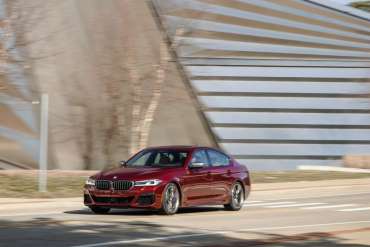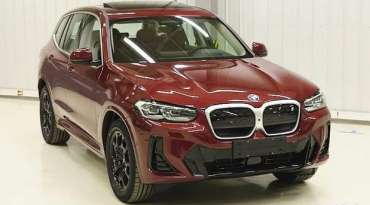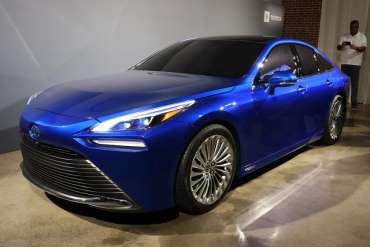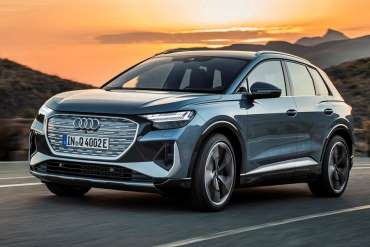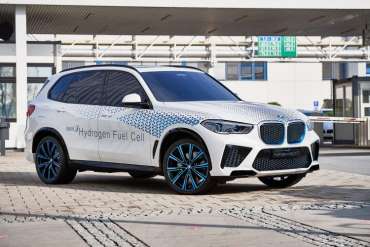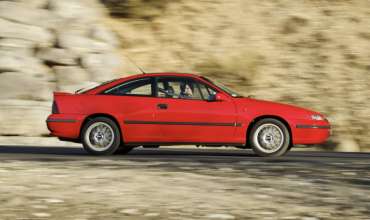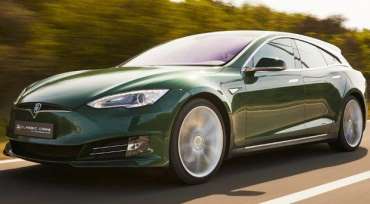
Worldcarblog.com
Tested: 2021 BMW M550i xDrive Gets Another Go at the Test Track
After disappointing acceleration numbers in our first test, we brought the M550i back for a retest to see if things improve.
When we last checked in with the BMW M550i we were a bit puzzled by its slower-than-anticipated acceleration numbers. BMW claims a zero-to-60-mph time of 3.6 seconds yet our test car needed 4.1 seconds to hit that mark. Heavier BMWs with identical 523-hp twin-turbo 4.4-liter V-8s, such as the X5 M50i, have bolted to 60 in 3.9 seconds, and our 5742-pound long-term BMW X7 M50i raced to 60 mph in 4.1 seconds. So, we called BMW's press office and asked to retest the M550i. There are plenty of things that can go wrong during testing. Possibly the V-8 or transmission had an issue or maybe the tank was filled with a bad batch of fuel. Whatever the reason, we got a different but identically spec’d M550i back for a retest.
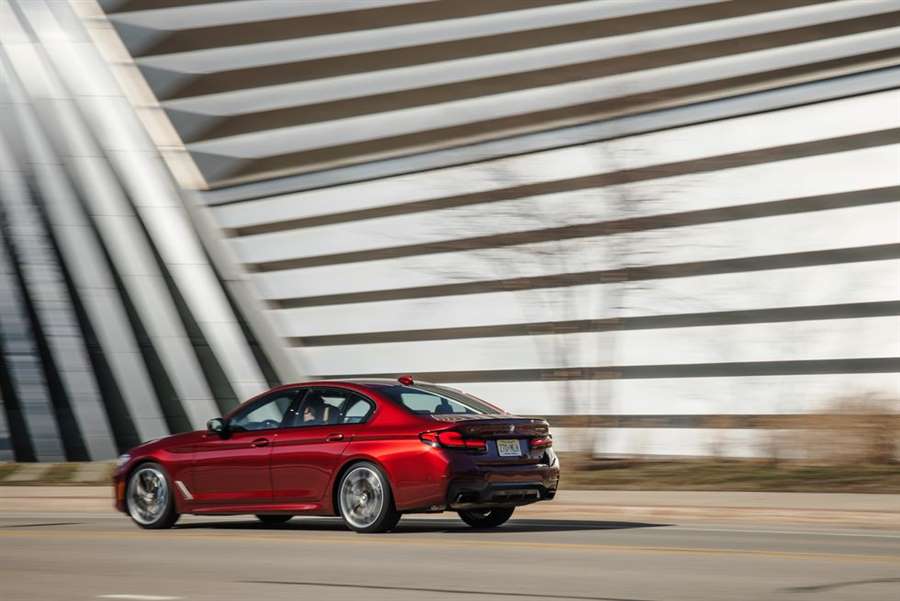
The results of round two were quicker, but still slower than what BMW claims. Test two resulted in a 3.9-second time to 60 mph and a 12.1-second quarter at 120 mph. Those figures are 0.2-second quicker than before. The unchanged quarter-mile trap speed, a reliable indicator of a vehicle's power-to-weight ratio, indicates the engine in round two was making the same amount of power as in round one.
HIGHS: Strong and subdued V-8, all of the trappings of a luxury car, relaxing into it.
Even if this M550i is not as quick as expected, its V-8 remains special. BMW seems to get that and offers the V-8-hungry customer an entire menu section. There are 600- to 617-hp twin-turbo V-8s in M division vehicles (M5, M8, X5M, X6M), and the brand also sells the M550i's engine in the M850i, X5 M50i, X6 M50i, X7 M50i.
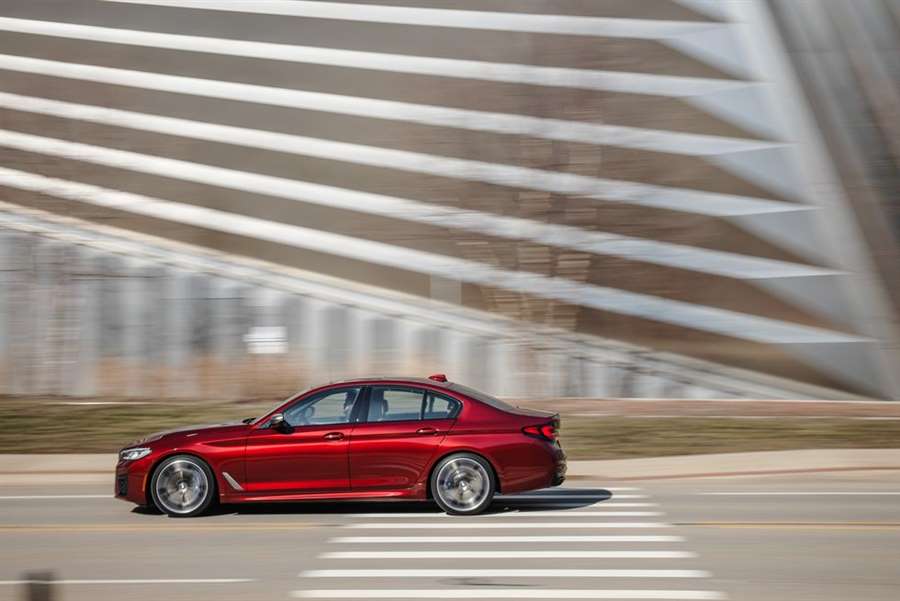
Set a mere rung below the M5, the M550i wears a body kit that makes it look nearly as aggressive as the M5, but crammed into the 5-series's engine bay is the detuned version of the BMW's 4.4-liter V-8. An eight-speed automatic is the only transmission, and it works brilliantly, delivering crisp shifts that largely go unnoticed and responding quickly to accelerator inputs. The engine has big lazy power and 553 pound-feet of torque to push you into the 20-way leather seats.
Under keep-the-gas-pedal-pinned acceleration, the M550i is considerably slower than an M5; we clocked the Competition model at 2.6 seconds to 60 and 10.7 seconds through the quarter-mile. But the M550i also is slightly quieter than an M5. The M550i's version of the engine redlines at 6500 rpm to the M5's 7200 rpm, so at full whack the M5 is a touch louder—81 dBa versus 79 dBa. There's a major difference when idling; an M5 registers 50 dBa to the M550i's 40-dBa whisper. The quieter demeanor matches the deluxe interior accommodations. When dressed with a full-leather dashboard ($700) and Cognac Dakota leather seats with the $3400 Bowers & Wilkins audio system playing Mozart's “The Marriage of Figaro,” the M550i xDrive does a convincing Rolls-Royce impression.
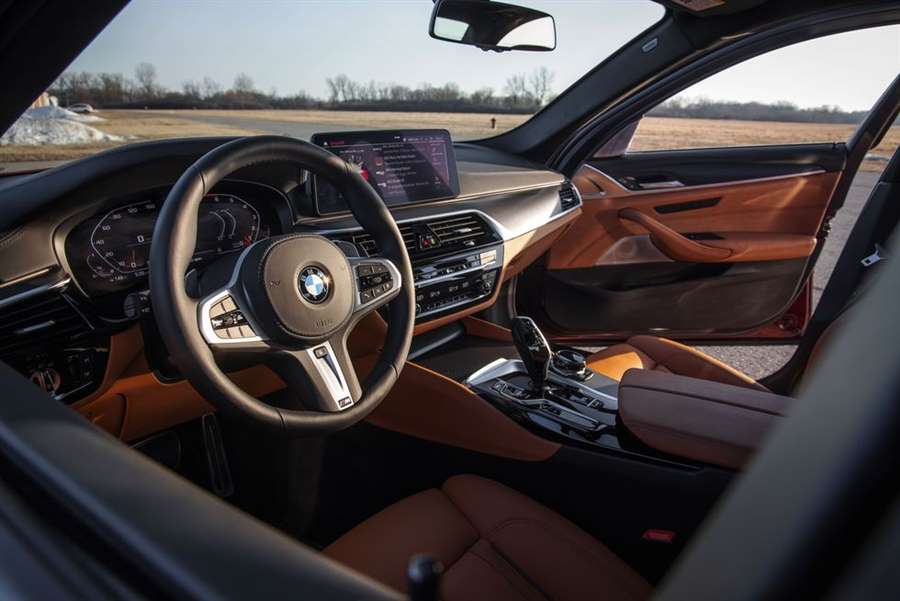
LOWS: Handling quirks, numb steering, not as quick as expected.
On the outside, there's no mistaking the M550i for a Roller. In Aventurin Red Metallic ($1950) and fitted with the M Performance appearance package you're basically looking at an M5 stunt double. Our test car came with optional 20-inch wheels with non-run-flat Bridgestone Potenza S007 summer tires. Those short little sidewalls don't look like they offer any cushioning, but fitted with the optional Adaptive M Suspension Pro you get a supple ride that avoids the crash of more overt performance models and the active anti-roll system keeps the 4480-pound sedan cornering as flat as a flapjack. On the skidpad, the Bridgestones held on with 0.95 g's of grip and stops from 70 mph took an easy and short 149 feet.
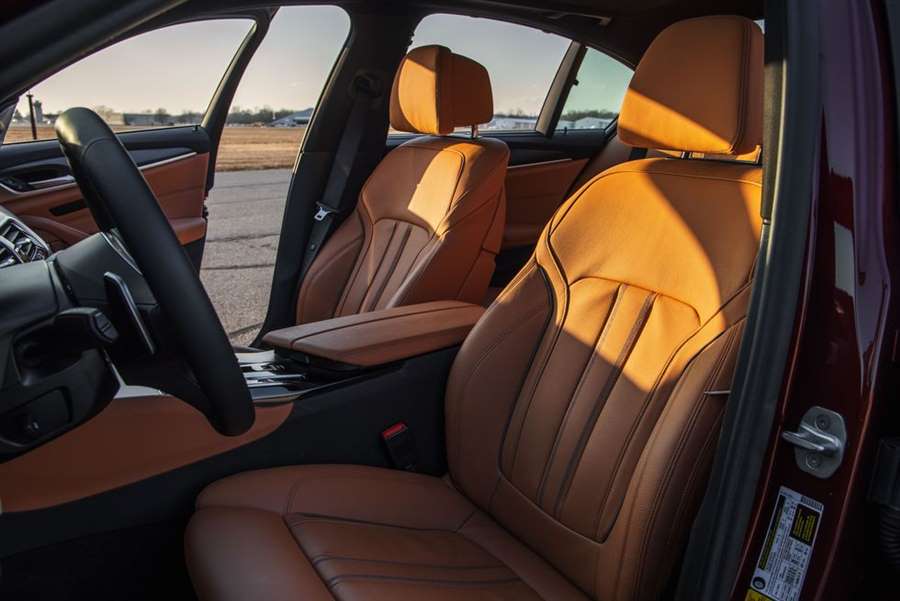
Actually using the chassis's potential in the canyons above Los Angeles left us a bit exhausted. Four-wheel steering is standard, as is Integral Active steering, and on top of that our test car came fitted with the $3600 Dynamic Handling Package that bundles the adaptive dampers and active anti-roll bars. BMW no longer fits a gearbox into the steering system to change ratios. Such as many other automakers, the ratio change—faster or slower—is done by altering the spacing of the teeth on the rack. BMW tunes the rear steer to increase agility or stability depending on the situation, but from behind the wheel the M550i's rear wheels seem to get into the act to disrupt your intended line through the corner. Dancing has a leader and a follower—the driver should lead, and the car should follow. The M550i keeps challenging the driver's prompts with unwanted yips and moves.
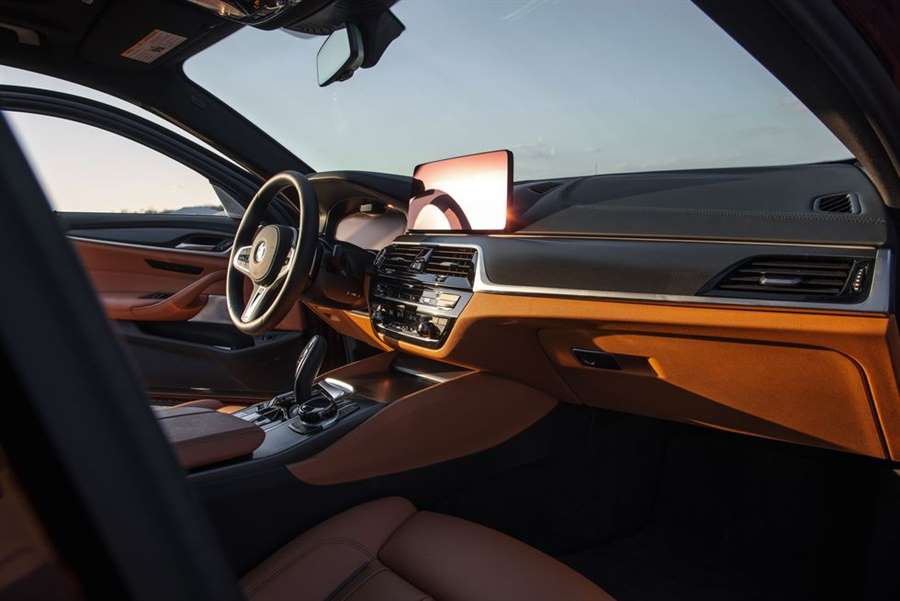
Path accuracy describes how well a car turns in and holds on to driver's intended path. We're guessing that the rear steer is tuned to give a lively feel, but when loaded up into a corner it revectors the car and you find yourself making adjustments to the numb steering to stay on the desired line. That bit of second-guessing that the chassis seems to do and the work you find yourself doing to counteract it is annoying and keeps you from trusting the car enough to push it hard in corners.
BMW doesn't fit the M5 with rear steer and it doesn't suffer from that sort of nervous second-guessing. We've previously experienced this handling quirk in a rear-steer equipped 540i and it remains here in the M550i, so we're guessing it's in how the system is tuned.
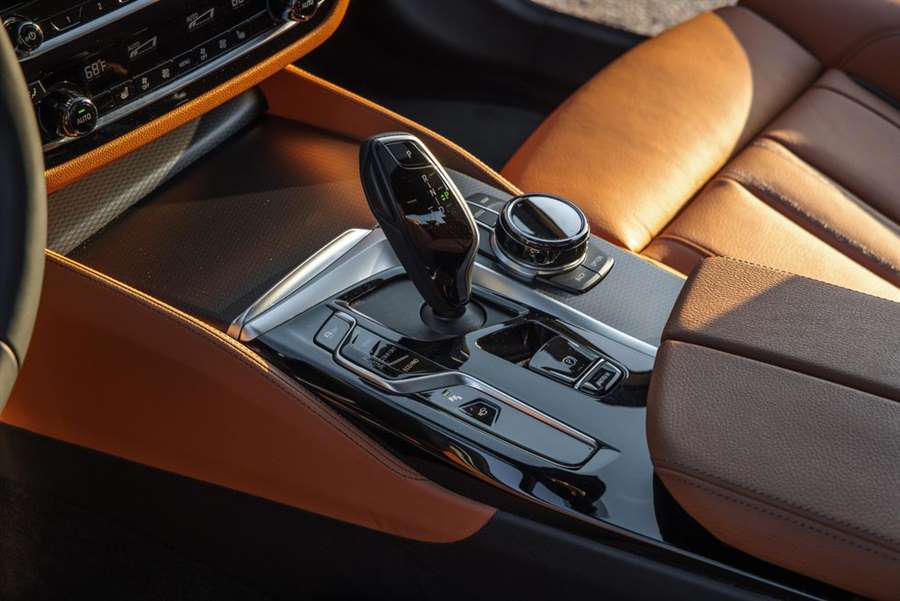
An M5 costs $25,000 more than the M550i's $77,795 base price, and that gap is why the 523-hp sedan exists. Loaded up, our tester came in at $93,735, but even if you try to go a la carte with the extras, all M550i models come with rear-steer and the chef doesn't offer substitutions. If you're thinking sports sedan, the M550i's handling might be a turn-off, but if you want to relax in leather-lined comfort while occasionally dusting off a Porsche driver at a stoplight drag race, you'll find the M550i pretty tasty.
(caranddriver.com)
A refurbished BMW X3 is coming soon
The current BMW X3 was introduced to the public in June 2017 (developed under the code number G01), it is based on the CLAR platform and is 55 kg lighter than its predecessor, while the coefficient of air resistance is 0.29.
In terms of dimensions, the X3 is 4716 mm long, 1897 mm wide, 1676 mm high and has a wheelbase of 2864 mm. It should also be mentioned here that the volume of the trunk is 550 liters, or 1,600 liters with the rear seats folded down.
Now, almost four years after its premiere, BMW has also prepared an updated version of it. This is confirmed by this first official image that was in the public eye, and which suggests that the Prime Minister is very close.
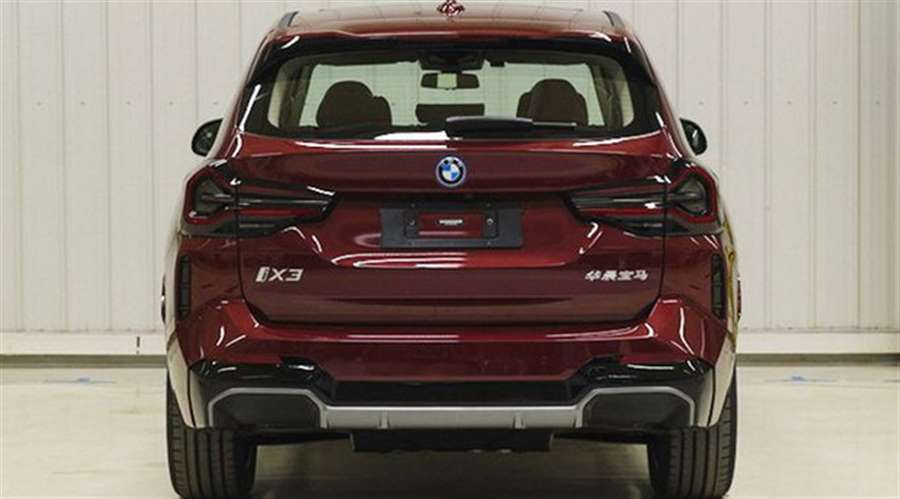
In any case, the trimmed front part, modified bumpers, front and rear LED lights, new design of aluminum wheels, new green color, gloss black details, as well as a modernized interior are expected.
There will most likely be no change in the engine range, so petrols with 184, 252 and 360 hp are expected, as well as diesels with 150, 190, 249 and 286 hp.
Also, the M versions with 480HP and 510HP respectively will be updated later.
As a reminder, the X3 M under the hood has a 3.0-liter six-cylinder engine with M TwinPower Turbo technology and 353 kW / 480hp and 600 Nm of torque. There is also a more powerful Competition version, which has 375 kW / 510 hp and 600 Nm.
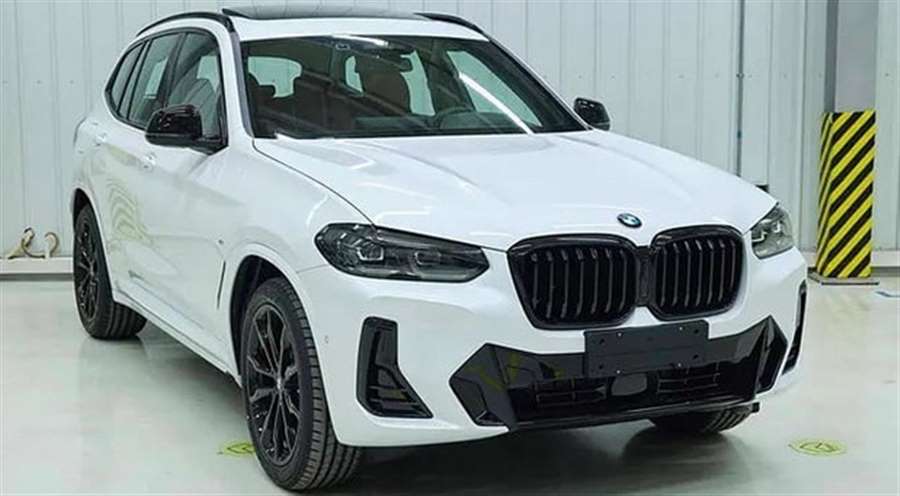
The BMW X3 M accelerates from 0 to 100 km / h in 4.2 seconds, while the 30HP more powerful Competition model does it in 4.1 seconds. In both cases the maximum speed is el. limited to 250 km / h but with the optional M Driver’s Package this limit is 280 km / h (for regular X3 M) or 285 km / h (for X3 M Competition).
In addition, the plug-in hybrid variant X3 xDrive30e remains in the range, bringing a combination of a 2.0-liter four-cylinder turbo petrol with 184hp, an electric motor with 109hp, lithium-ion batteries, an 8-speed Steptronic transmission and all-wheel drive. The total power is 292 hp and 420 Nm, acceleration from 0 to 100 km / h takes 6.1 seconds, top speed is 210 km / h, and it is possible to drive only on electric drive (up to 46 km per WLTP).
Finally, the electric BMW iX3 will be adjusted, which in the current version has 210 kW / 286 hp and 400 Nm, and with one charge of lithium-ion batteries of 80 kWh exceeds 460 km (according to the WLTP standard). The Germans also state that 80% of the battery capacity can be charged in just 30 minutes with the help of a 150 kW charger. Acceleration from 0 to 100 km / h takes 6.8 seconds, while the top speed of this 2185 kg heavy vehicle is limited to 180 km / h.
Exposed! All Models From Toyota And Lexus Until 2024
What's planned through 2024? Read on.
The world will very much continue despite the coronavirus pandemic currently sweeping the globe. Although it's way too soon to know when life will return to normal, automakers are still preparing future models. Today, a massive leak has been exposed thanks to AllCarNews on Instagram revealing what Toyota and Lexus have planned through 2024. Some of the following has already been rumored but there's at least one new vehicle we didn't see coming.
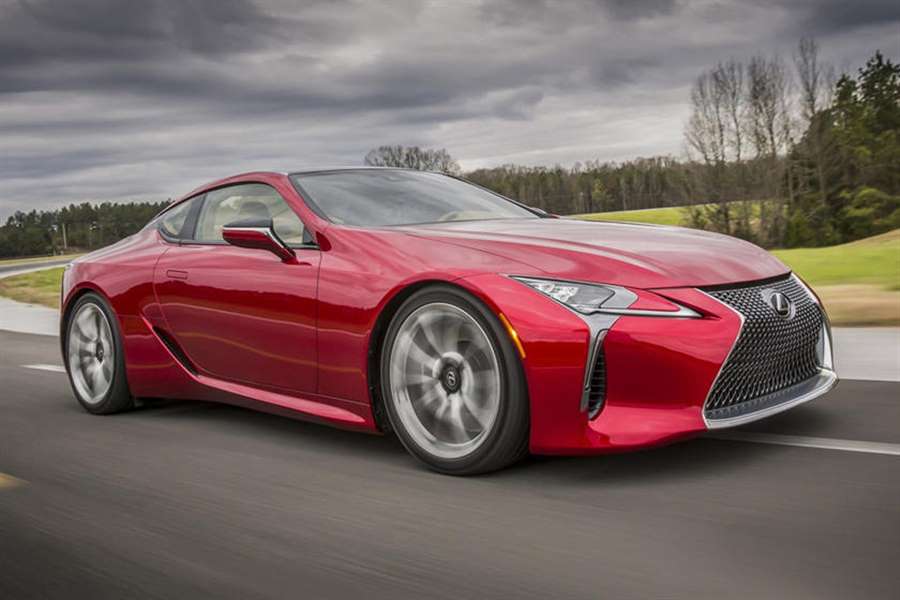
First up, the next-generation Toyota 86 and its sister ship, the Subaru BRZ. Both are expected to debut in July 2021 and the 86 will be rebranded the GR86. Power will come from a new turbocharged engine with a reported 255 horsepower. Rear-wheel-drive will remain, of course. Next, the Toyota Camry will also receive a mid-life refresh that year, followed by the Avalon in 2022. The next-generation Camry isn't due until 2024.
Also in 2021, we'll be seeing a new Corolla-based crossover whose name has yet to be announced. One possibility is Corolla Cross with production potentially taking place at the joint Toyota-Mazda plant in Alabama, which is still under construction. As we previously reported, the Toyota Venza wagon-crossover is also due to return in 2021. In all likelihood, it'll share a decent amount of its components with the Camry, once again.
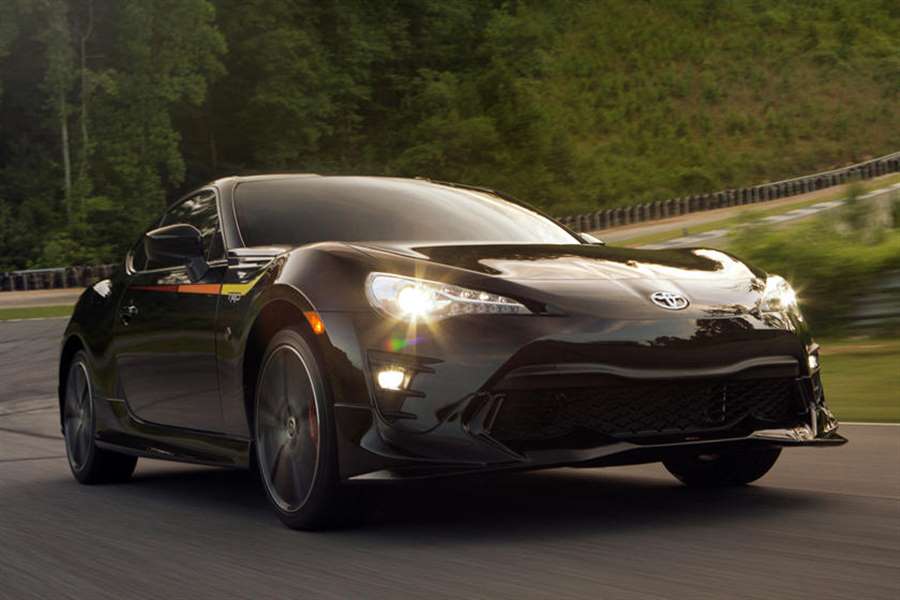
Moving on to trucks and SUVs, the leaked report indicates an all-new Toyota 4Runner and Sequoia will debut for the 2023 model year. Both will share the next-gen Tundra's TNGA-F architecture. The Sequoia and Tundra will ditch the 5.7-liter V8 in favor of a new twin-turbo hybrid V6. The 4Runner will get this engine as well. The redesigned Toyota Tacoma will arrive for 2024, but no precise details about it are yet available.
As for the Toyota Land Cruiser, it appears it will come in 2022 but unlike the current model, it'll be a stripped-out off-roader without a hint of luxury. In other words, it's going back to basics. Sweet.
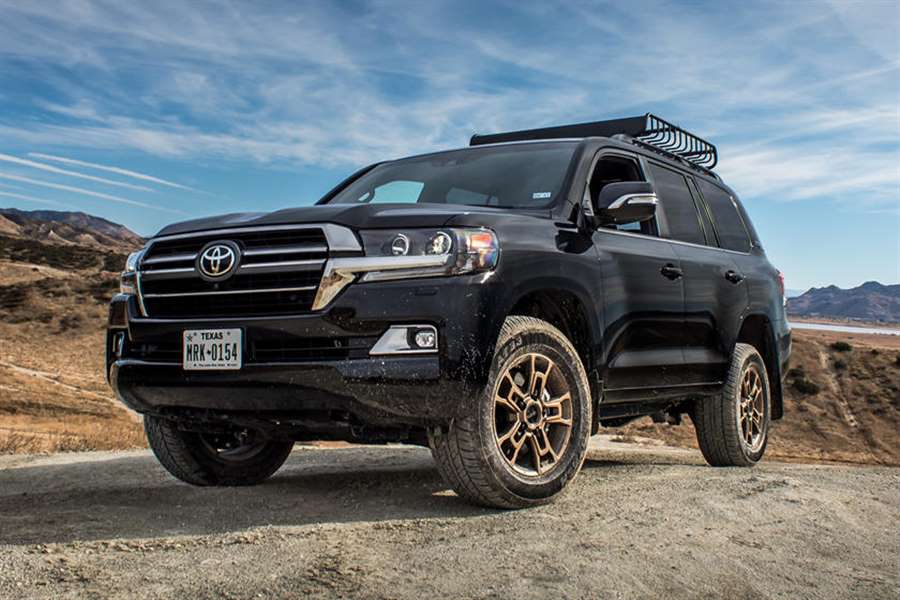
As for Lexus, unlike the Land Cruiser, its LX counterpart will take the exact opposite approach by becoming a Bentley Bentayga rival, powered by the same twin-turbo V6. In general, Lexus is dropping all V8 models priced below $90,000. An all-new twin-turbo V8 will power the long-awaited LC-F in 2022. Also that year, the ES and LS will get a refresh. Surprisingly, the Lexus GS is being replaced outright by a Toyota Mirai-based RWD sedan.
Before that, the next Lexus IS, last updated in 2016, will debut in 2021, followed by a new RX and GX in 2023. Lastly, a new Lexus NX will come in 2021 and it'll ride on the TNGA-K platform with a total of five different powertrains and a new 14-inch touchscreen.
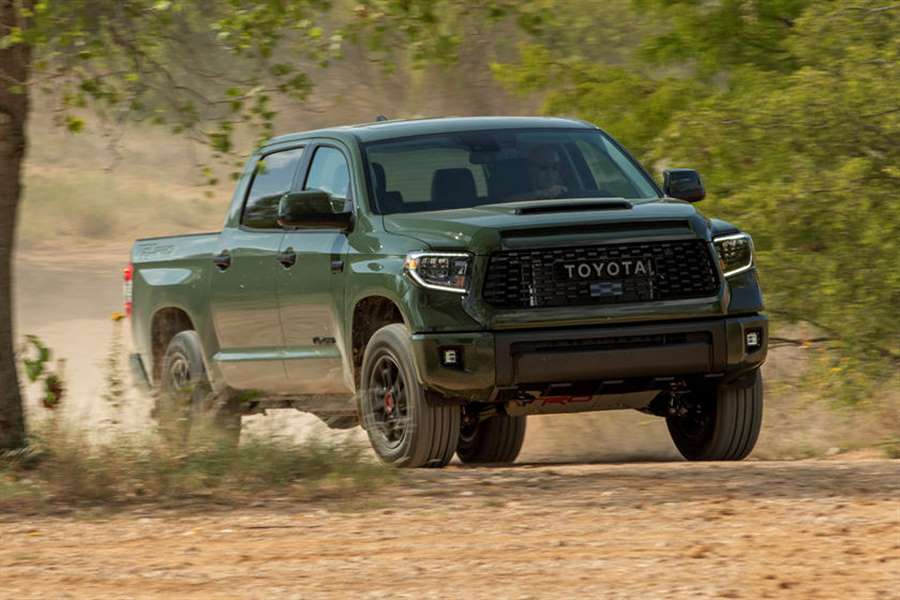
This is a lot of new information to take in, but Toyota and Lexus clearly have a very aggressive new product offensive on the way. We can hardly wait.
(https://carbuzz.com/news/exposed-all-models-from-toyota-and-lexus-until-2024)
Audi Q4 E-Tron price and spec details
Audi's take on the electric family SUV is cool and classy
Audi has revealed full details and prcies of the new all-electric Q4 E-Tron. It's the company's first electric car based on the same technology as the Volkswagen ID.3 and Skoda Enyaq iV and as well as being available as a regular SUV, you can also specify a coupe-like Sportback version.
The Q4 E-Tron introduces some new technology and offers some choice in terms of price and range. Firstly, there will be three variants from launch, the 35, 40 and 50 Quattro. As you may have already guessed, the 50 Quattro features all-wheel drive as standard – the 35 and 40 versions are rear-wheel drive only.
Rivals? There are a few that include the Skoda Enyaq iV, Volkswagen ID.3, BMW iX3 and Mercedes-Benz EQA and EQC. The market for mid-sized electric SUVs is really starting to heat up.
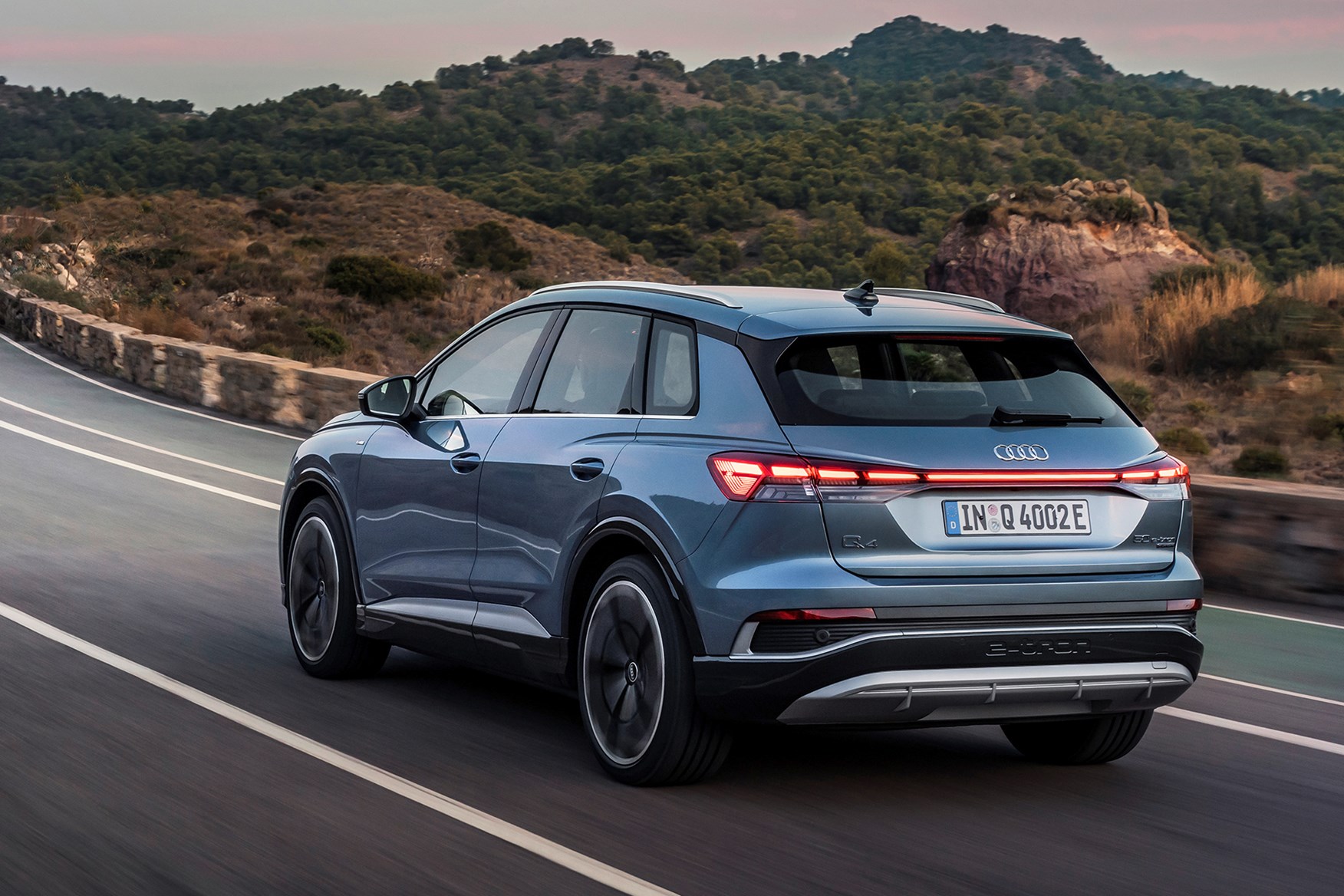
What it's like inside?
Details new to the Q4 E-Tron include a steering wheel with a flat top and bottom (with haptic touch panel buttons) on S Line models and additional storage cubbies, including bottle holders in the door armrests. The central MMI touchscreen (10.1-inch as standard, 11.6-inch as an option) still has haptic feedback like most larger Audis, but there is only one touchscreen, with manually-controlled air-con switchgear below it.
Much like Volkswagen’s ID.3 and ID.4, along with the latest Mercedes-Benz S-Class, the Q4 will be available with an optional augmented-reality head-up display. The AR-HUD actively displays navigation directions in your field of view, gives you markers for the car in front when you have the adaptive cruise system active and even flags up the edges of your lane if you stray out of them.
Audi is particularly promoting the practicality aspect of the new Q4 E-Tron, saying that while it has the rough exterior dimensions of a Q3, it has space inside akin to the Q5 and quality like a Q7. The Q4 has a sliding rear bench, allowing for a boot volume of 520 litres in the non-Sportback variant.
What models and trims are available?
The Q4 E-Tron is available to order now and UK deliveries are expected in June 2021. Trims available at launch will be the Sport, S Line and Edition 1 forms. Every battery and powertrain combination is available with each equipment level.
Even though Sport is the entry level, it still comes equipped with LED headlamps, a 10.1-inch MMI infotainment screen and aerodynamic 19-inch alloy wheels. The S Line model will undoubtedly be the most popular – as is the case with all other Audi models – and gains 20-inch alloy wheels, sportier-looking front and rear bumpers and lowered suspension. The special Edition 1 trim will be a more elaborate offering, with Matrix LED headlights and unique interior and exterior trim.
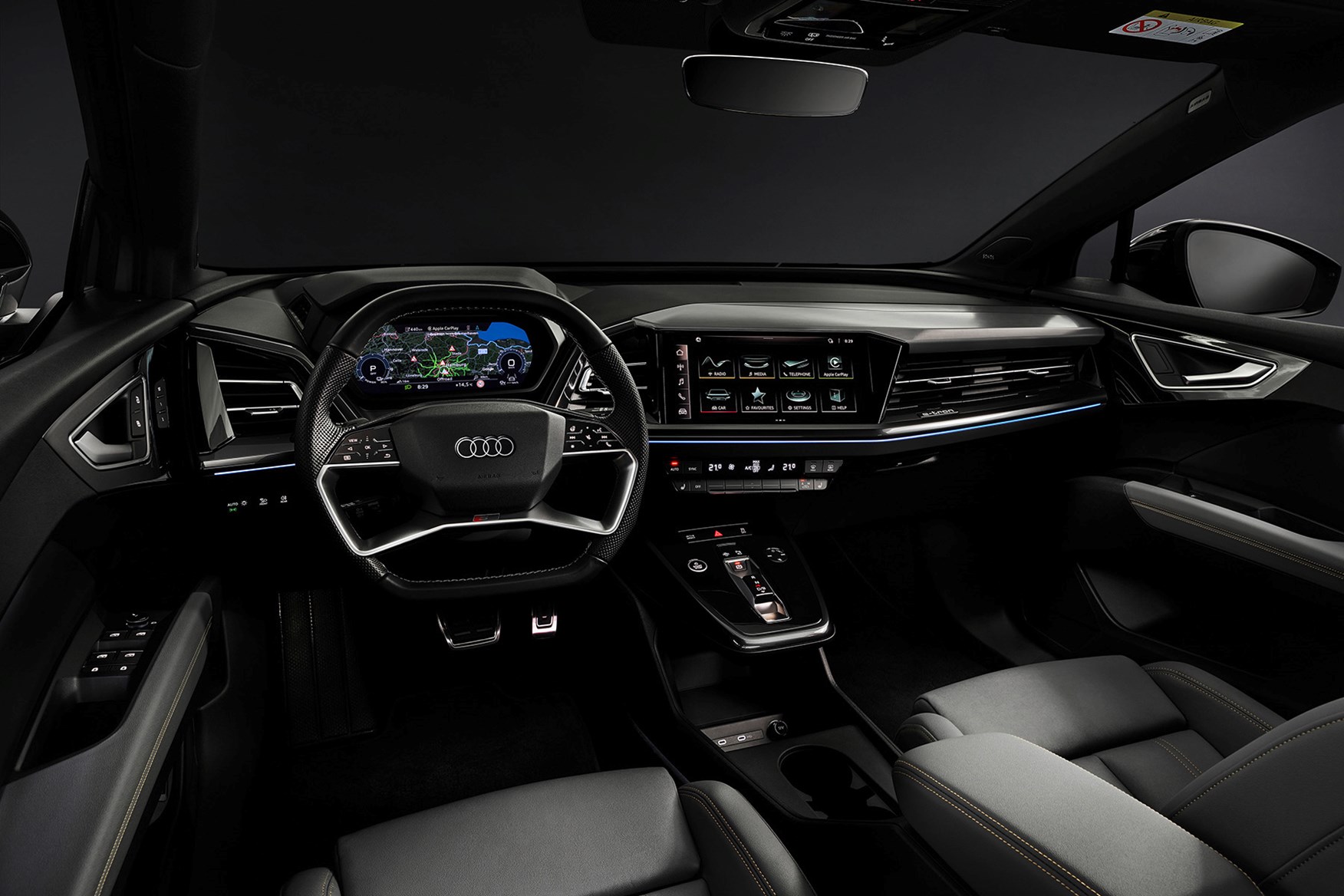
Expected to join the range after the initial launch in June 2021 will be the Q4 E-Tron Vorsprung. Audi has confirmed It’s priced from £54,450 and gains 21-inch wheels, Nappa leather-trimmed seats and a more comprehensive driver-assistance package.
What else should I know?
The Q4 E-Tron can support 11kW AC charging and up to 125kW DC charging, with Audi claiming around 80 miles can be zapped into its new EV in just 10 minutes using those fastest of chargers.
Very little has changed between the production Q4 E-Tron and the concept car that debuted a couple of years ago. The Q4 SUV’s relatively boxy shape is emphasised by clean-cut wheelarches, a blocked-out grille in a very familiar Audi shape, and a single light panel that stretches across the rear. If you choose the optional matrix LED lights, you can customise the way the daytime running lights look with four distinct patterns.
Audi also offers something called ‘E-Tron Charging Service.’ It’s not an unheard of concept from manufacturers – you’re essentially given an RFID card and sign up to a tariff that gives you streamlined access to chargers from different networks, saving you the pain of signing up to individual ones.
Should I order one?
If you like the look of it. the Audi Q4 E-Tron is available to order now, with prices starting from £40,750. That figure soon balloons by choosing plusher models, larger batteries and optiona extras. The question is how much you think it's worth the premium over its Volkswagen Group sister cars, the ID.4 and Skoda Enyaq iV. We can't really answer that until we've driven it.
No model in the Q4 E-Tron range is eligible for the government's £2,500 plug-in car grant. We do like the sheer breadth of models available and the classy interior – and look forward to driving it. You'll be able to read about that here first.
(parkers.co.uk)
The first BMW hydrogen models will arrive next year
The development of CO2-free propulsion technologies has become a top priority for the BMW Group. In addition to purely electric, they are now working on the development of hydrogen propulsion systems, which will first be implemented in the current BMW X5. The total power of the system will be almost 400 hp.
Like all electric cars, fuel cell models (FCEVs) use electricity to power electric motors. Unlike other electric models, FCEVs do not use energy from a battery but from a hydrogen fuel cell. In it, a chemical reaction takes place between hydrogen and oxygen, and thus a current is created that drives the engine. Thus, the use of this technology can help further decarbonization.
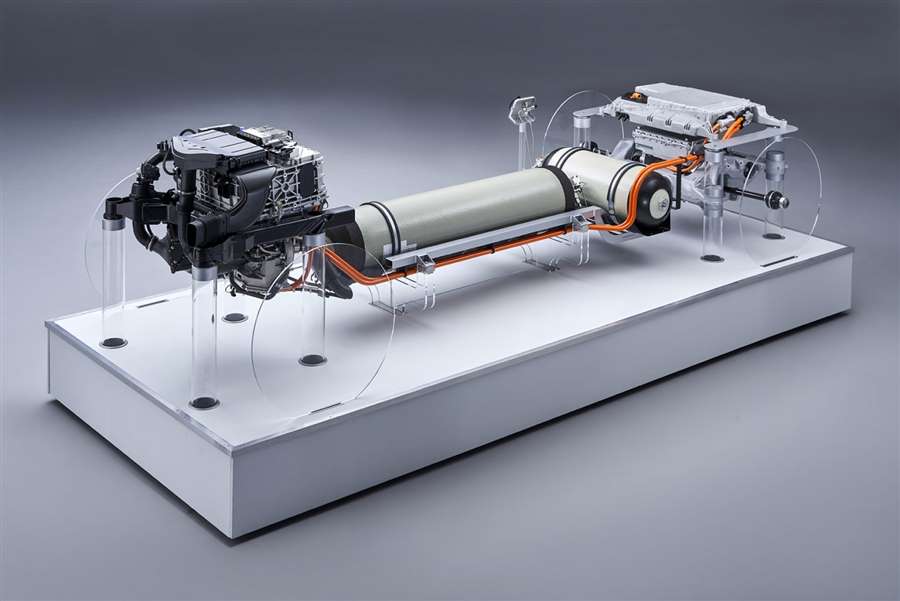
The BMW Group will launch small series of so-called Hydrogen NEXT models from 2022, and the new drive will be implemented in the current BMW X5, which will emit only water vapor as a by-product.
A key role in this is played by the Landshut Technology Center (LuTZ), which produces the most important components for hydrogen-electric propulsion, which will be installed in the BMW X5 models.
The system will use hydrogen and will generate up to 125 kW of electricity for an electric motor that is mounted on the rear axle. The tanks will be able to store 6 kg of hydrogen and oxygen, and the filling time is only 3 to 4 minutes.
The electric motor is the same as in the electric BMW iX3 SUV, and the total power of the system will be 275 kW, or 374 hp.
The most expensive Opel Calibra cost 300,000 German marks?
There is a reason why a 1993 Opel Calibra cost 300,000 German marks. It is a special specimen that came out of the workshop of the famous Günter Artz, a German car dealer, also known for, to put it mildly, the extravagant projects he made.
The Opel Calibra was produced from 1989 to 1997, and was an example of a car that, combining aerodynamics with a striking design (it had a record drag coefficient and then an outstanding appearance), gained a reputation as a cult coupe among enthusiasts.
But one of them, very special, under the sheet metal was actually the famous Opel Lotus Omega, which we recently wrote about.
The unique car was created by Günter Artz, a German car dealer who initially used Volkswagen models as a basis, after which he started using Opel. The goal, Artz says, was to pack performance and speed against all rules and amplify the impression of surprise.
Probably Artz's most famous car is the Golf 928. On the chassis of the damaged Porsche 928, he built a huge 240 hp Golf, which was 21 centimeters wider and 30 centimeters longer than VW's standard model.
In the test, it reached a top speed of 232 km / h, and its price was 150,000 marks, which is more than the original Porsche 928 with 300 hp. Given that, it is no wonder that only two copies of Artz's Golf were made.
However, enthusiasts believe that Artz's "Magnum Opus" was a yellow Lotus Calibra. With an output of 377 hp and a top speed of over 280 km / h, it was a perfect "camouflage", writes Auto Klub.
In addition to under the hood, Lotus' "ingredients" were also used inside the cab. The dashboard, steering wheel and leather seats come from Omega A, and the Lotus signature adorned the dials.
At the time Lotus was part of General Motors, powerful engines such as the 3.6-liter twin-turbo six-cylinder in the Omega or the 5.7-liter V8 in the Corvette C4 ZR-1 were being developed.
Artz initially focused on increasing performance. For the project, he assembled a Lotec version of the six-cylinder with 470 hp, but after bad experiences, a standard engine of 377 hp was installed.
The project was finally named Lotus Calibra - weighing 1.7 tons, shockingly powerful and surprisingly comfortable. Like the Golf 928, the Lotus Calibra was larger than the production version - about 16 centimeters longer and even 12 centimeters wider. In addition, larger alloy wheels wrapped in wider tires were used.
Production cost a real small fortune. The standard Opel Calibra was worth 45,000 marks at the time, and the windows alone, specially made in Italy, cost 13,000, and 17,000 marks had to be paid to Kamei for custom-made bumpers.
The final price of the Lotus Caliber was 300,000 marks, and only a few copies were produced.
The car was approved for use on a public road only in 1993, and the project fell silent after Opel terminated the dealership agreement, so it was shut down in 1995. A year later, Artz gave up the car business.
The unique Tesla Model S station wagon is still looking for its customer
In 2018, a Dutch company made the first of the planned 20 copies of the Model S Shooting Brake, and this car was even exhibited at the Geneva Motor Show in March 2019, where its design attracted the attention of four-wheeler fans.
In the end, there was nothing from the ambitious plan because the company failed in the meantime, but the first and only Tesla Model S Shooting Brake survived, writes B92.
This car is sold on the site AutoScout24.nl at a price of 224,521 euros, if the buyer comes from one of the countries of the European Union, while the price for clients from other parts of the world is reduced by VAT and amounts to 185,555 euros.
As it is stated, the original Tesla Model S, on which the caravan is based, was made in 2013, and the car has covered 65,000 km so far. The maximum power of the electric drive is 421 hp (310 kW).

